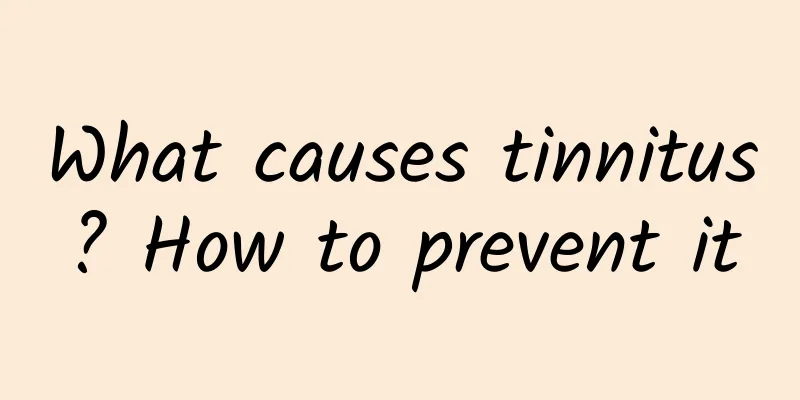How to treat right ovarian cysts? Teach you how to keep away from cysts

|
Ovarian cysts are common gynecological diseases in women. Ovarian cysts mostly occur in women between the ages of 20 and 50. Cysts are benign tumors, but they have a very high chance of becoming malignant. If not treated in time, they may turn into ovarian cancer. So what are the ways to treat ovarian cancer? 1. Surgical treatment of benign ovarian cysts1: Ovarian cystectomy Most of these patients have no menstrual disorders, and some even have complicated pregnancy. If the tumor is more obvious on one side, a salpingo-oophorectomy on the affected side can be performed. 2: Salpingo-oophorectomy for unilateral ovarian cysts. Bilateral ovarian cysts occurring in older patients (over 45 years old) are usually treated with unilateral or bilateral oophorectomy. Patients who are not fit for surgery due to general condition or have severe inflammation often undergo total hysterectomy. It is worth noting that for the surgical treatment of larger ovarian cysts, the size of the incision should be disregarded and complete resection is appropriate to avoid rupturing the patient's pulse and allowing the contents to spill into the abdominal cavity or incision. During the operation, attention should be paid to the patient's pulse, breathing, and blood pressure changes. When necessary, infusion or blood transfusion, oxygen infusion should be accelerated. Early detection of acute gastric dilatation, paralytic intestinal obstruction, and the resulting water and electrolyte imbalance and blood chemistry changes should also be prevented. 3: Adnexectomy and total hysterectomy occurs in perimenopausal or postmenopausal women with unilateral or bilateral ovarian cysts. If the patient's general condition is not suitable for the surgery, bilateral adnexectomy and total hysterectomy are appropriate, but this will seriously affect endocrine disorders. II: Surgical treatment of malignant ovarian cysts1: Most patients are in the advanced stage when they seek medical treatment, so every effort should be made to remove the primary cyst and any visible pelvic and abdominal metastases. Because malignant ovarian cysts are often adhered or infiltrated with the uterus and adnexa, and are closely attached to the pelvic peritoneum, the uterus and tumor are often removed in one piece, such as by rolling carpet or dumpling-like removal of the greater omentum, partial intestinal resection, partial bladder and ureter resection. For ovarian malignant tumors complicated with ascites, regardless of whether they are completely removed or not, it is advisable to place a catheter in the abdominal cavity to facilitate postoperative intraperitoneal injection of anticancer drugs or radioactive colloidal gold or colloidal phosphorus. 3: To prevent ovarian cysts, you need to strengthenExercise, strengthen your physical fitness, develop good living habits, quit smoking and limit alcohol. Knowing more about ovarian cysts can help prevent them! |
<<: All the details about epithelial papilloma are here!
>>: What to do if ovarian teratoma recurs? Chinese medicine diet therapy secret recipe
Recommend
IDC: China's learning tablet market shipments in the second quarter of 2023 will be approximately 1.03 million units, up 36.6% year-on-year
IDC's quarterly learning tablet tracking repo...
How many times do you ovulate each month?
Mature and healthy women go through their menstru...
How to treat breast swelling
When a woman suffers from mastitis, it is easy to...
eMarketer: Global social network users exceeded 1.4 billion in 2012
The latest data from market research firm eMarket...
I was pregnant for two months and suddenly there was blood streaking
Pregnancy is both a happy and painful thing for a...
What should I pay attention to if I bleed again one week after my period is over?
In fact, we know that when menstruating, if a gir...
Can you drink rice wine after caesarean section?
Cesarean section is currently widely used in clin...
Is it easy to get HPV when taking a hot spring bath? Doctors explain
In the dead of winter, hot springs and bathing ha...
How to take care of urethritis when the urine test shows 2 plus signs of white blood cells
Many people have done urine tests. Urine tests ca...
What are the causes of menstrual disorders in women?
Female menstrual disorders are what we often call...
How to eat peach gum? Does peach gum have to be boiled for 30 minutes?
Peach gum is also known as peach blossom tears. T...
TCM Health Care Series for the Elderly | How to Use TCM to Treat and Rehabilitate Chronic Cough and Asthma in the Elderly
In daily life, some patients have symptoms of chr...
Light bleeding after intercourse
Women's health not only affects themselves, b...
To those of you who eat grass: It’s a lot of pain, but it’s even more painful to weigh it? Teach you the right way to eat it →
For those who want to lose weight What to eat eve...









